Protecting Against Pathogens

Come monsoon and various water and air-borne diseases flourish but with proper awareness and preventive measures, such potentially life threatening viral infections can be kept at bay
By Dr Vinay Aggarwal
According to World Health Organization (WHO), every year more than 3.4 million people die as a result of water-related diseases. Most of the victims are young children. Common symptoms include high fever, nausea and vomiting which can become life threatening, if ignored.
Monsoon is on and so are waterborne diseases that come as an unwelcome gift with this season. The onset of monsoon brings relief from the scorching heat of summer but it also makes one susceptible to a host of waterborne diseases.
Seasonality is a long-recognised attribute of many viral infections of humans, but the mechanisms underlying seasonality, particularly for person-to-person communicable diseases, remain poorly understood. Better understanding of drivers of seasonality could provide insights into the relationship between the physical environment and infection risk, which is particularly important in the context of global ecological change in general, and climate change in particular.
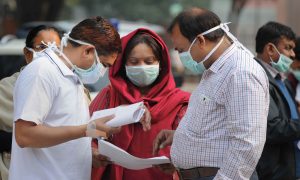 In broad terms, seasonality represents oscillation in pathogens’ effective reproductive number, which, in turn, must reflect oscillatory changes in infectiousness, contact patterns, pathogen survival, or host susceptibility. Epidemiological challenges to correct identification of seasonal drivers of risk include failure to adjust for predictable correlation between disease incidence and seasonal exposures, and unmeasured confounding.
In broad terms, seasonality represents oscillation in pathogens’ effective reproductive number, which, in turn, must reflect oscillatory changes in infectiousness, contact patterns, pathogen survival, or host susceptibility. Epidemiological challenges to correct identification of seasonal drivers of risk include failure to adjust for predictable correlation between disease incidence and seasonal exposures, and unmeasured confounding.
The existing evidence suggests that the seasonality of some enteric and respiratory viral pathogens may be driven by enhanced wintertime survival of pathogens, and also by increased host susceptibility resulting from relative ‘wintertime immune suppression’. For vector-borne diseases and zoonoses, environmental influences on vector or reservoir abundance, and vector biting rates, are probably more important. However, numerous areas of uncertainty exist, making this an exciting area for future research.
A number of epidemiological factors complicate the study of seasonal drivers of infectious diseases. It is my opinion that principal among these is the issue of co-seasonality of numerous environmental, social and behavioural phenomena that could influence the reproductive number of an infectious disease (the number of infection cases created by a prevalent case). This creates significant potential for numerous, predictable but fallacious associations between exposures and disease outcomes. There is also the potential for epidemiological confounding by failure to adjust for seasonal behavioural phenomena that are correlated with environmental exposures (as, for example, when attempting to identify the role that summertime school closure may play in dampening influenza epidemic).
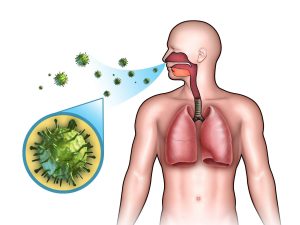 The most common waterborne diseases associated with monsoon are malaria, jaundice (Hepatitis) and gastro-intestinal infections such as typhoid and cholera. Apart from many biological reasons why these diseases flourish in monsoon, there are some other reasons you should be careful about: overflowing drains, sewage pipe bursts and mix-ups with municipal drinking water lines which contaminate your drinking water. There are frequent outbreaks of common cold and cough which also need timely attention. Due to intense humidity, skin and scalp infections are common. Often, asthma and arthritis also get aggravated.
The most common waterborne diseases associated with monsoon are malaria, jaundice (Hepatitis) and gastro-intestinal infections such as typhoid and cholera. Apart from many biological reasons why these diseases flourish in monsoon, there are some other reasons you should be careful about: overflowing drains, sewage pipe bursts and mix-ups with municipal drinking water lines which contaminate your drinking water. There are frequent outbreaks of common cold and cough which also need timely attention. Due to intense humidity, skin and scalp infections are common. Often, asthma and arthritis also get aggravated.
Airborne diseases are commonly spread by sneezing and coughing, making the diseases difficult to control. Airborne diseases are illnesses spread by tiny pathogens in the air. These can be bacteria, fungi, or viruses, but they are all transmitted through airborne contact. In most cases, an airborne disease is contracted when someone breathes in infected air. And a person also spreads the disease through their breath, particularly by sneezing and coughing, and through phlegm.
It is rightly said that prevention is better than cure. If one follows preventive measures then such potentially life threatening waterborne diseases can be kept at bay.
Avoid wading in rainwater or going out during a heavy downpour. If you must, remember to wash the area of contact with soap and water as soon as possible.
Personal hygiene can be intensified during this period. One thing is to keep skin clean and dry. Washing hands often throughout the day can help prevent diseases.
Stagnant water is a breeding ground for mosquitoes. Check your living space for any hotspots of contamination eg. air conditioning trays, flowerpots and vases, and choked drains. If there’s a pond near your premises, then breed Gambusia fish as they reduce the chances of mosquito breeding. Alternately, call the municipal authorities for fumigation.
Use effective mosquito repellant while going out and cover windows with mosquito nets.
Our digestive system becomes weak during this season so one should avoid eating spicy, fried and junk food as these have heated thermal effect on our bodies and make us feel lethargic and sluggish.
Keep food covered. Flies look harmless but are carriers of serious waterborne diseases such as typhoid and cholera.
Drink warm water and strictly avoid untreated water, or water/ice from unknown sources.
Make that important decision about investing in a home water purifier for the safety of your loved ones; during the monsoon and every day. Consider a water treatment option based on your water quality. UV technology is an excellent disinfection technology and is ideal for municipal treated and supplied water. When the water is from underground sources such as borewells and is high in salts/TDS making it hard and unpalatable, consider RO technology.
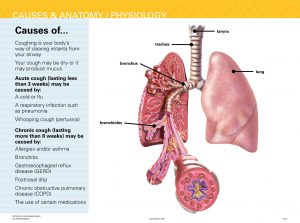 The disease outcomes (and exposures) need to be aggregated at weekly, monthly or yearly levels for study. This creates the potential for a temporal version of ecological fallacy, with changes in disease risk being attributed to average exposure levels during a given time period, when in fact they are correlated with a subset of exposures that are effaced because of aggregation. As a more concrete example, if the cause of a surge in disease was a rainy day that occurred during an unusually dry month, we might, at the monthly level, attribute that surge to drought rather than rain.
The disease outcomes (and exposures) need to be aggregated at weekly, monthly or yearly levels for study. This creates the potential for a temporal version of ecological fallacy, with changes in disease risk being attributed to average exposure levels during a given time period, when in fact they are correlated with a subset of exposures that are effaced because of aggregation. As a more concrete example, if the cause of a surge in disease was a rainy day that occurred during an unusually dry month, we might, at the monthly level, attribute that surge to drought rather than rain.
Numerous environmental, behavioural and immunological mechanisms have been proposed for the distinct seasonality of many viral pathogens.
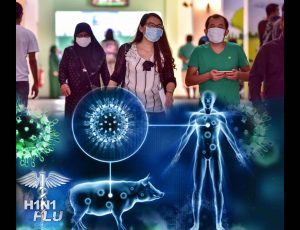 Swine Flu
Swine Flu
H1N1 influenza (or swine flu) is a highly contagious acute respiratory disease of pigs caused by type A influenza virus that regularly causes outbreaks of influenza in pigs. The symptoms of H1N1 flu in people are similar to the symptoms of regular human seasonal influenza and include fever, coughing, stuffy nose and body aches, and even sore throat, nausea, vomiting, and diarrhea. Swine flu is spread quickly from person to person through air, mucus and saliva particles. Swine flu is a common occurrence in countries with extreme cold weather such as the United States and parts of Europe. The H1N1 virus affected more than 16,000 people in India in 2015.
Oseltamivir, marketed under the trade name Tamiflu, is the recommended anti-viral drug which helps treat swine flu.
Avian Influenza
Avian influenza (AI) is an infectious viral disease of birds (especially wild water fowl such as ducks and geese), often causing no apparent signs of illness. AI viruses can sometimes spread to domestic poultry and cause large-scale outbreaks of serious disease. Some of these AI viruses have also been reported to cross the species barrier and cause disease or subclinical infections in humans and other mammals.
Ebola virus disease (EVD), formerly known as Ebola haemorrhagic fever, is a severe, often fatal illness in humans caused by ebola virus. The virus is transmitted to people from wild animals and spreads in the human population through human-to-human transmission. The first EVD outbreaks occurred in remote villages in Central Africa, near tropical rainforests, but the most recent outbreak in West Africa has involved major urban as well as rural areas. The most severely affected countries were Guinea, Liberia, Sierra Leone and Nigeria. Favipiravir – is an antiviral drug approved in Japan for treatment of the influenza virus. It is being tested in Gueckedou, Guinea. Brincidofovir is an antiviral drug that has been tested in Liberia. This trial recently stopped as Ebola cases fell.

Dengue
Dengue is spread by the bite of an infected mosquito Aedes aegypti. It cannot be spread directly from person to person. Dengue fever is marked by the onset of sudden high fever, severe headache and pain behind the eyes, muscles and joints. Severe dengue (also known as Dengue Haemorrhagic Fever) was first recognized in the 1950s during dengue epidemics in the Philippines and Thailand. Today, severe dengue affects most Asian and Latin American countries and has become a leading cause of hospitalization and death among children in these regions.
Zika
Zika virus is a flavivirus, closely related to dengue. Zika virus disease is caused by a virus transmitted primarily by Aedes mosquitoes. People with Zika virus disease can have symptoms that can include mild fever, skin rash, conjunctivitis, muscle and joint pain, malaise or headache. There is no specific treatment or vaccine currently available.
Zika virus was first identified in Uganda in 1947 in rhesus monkeys through a monitoring network of sylvatic yellow fever. It was subsequently identified in humans in 1952 in Uganda and the United Republic of Tanzania. Outbreaks of Zika virus disease have been recorded in Africa, the Americas, Asia and the Pacific. Beginning in 2014, Zika virus outbreaks have occurred throughout the tropical and sub-tropical areas of the western hemisphere, as far north as Mexico and Puerto Rico.
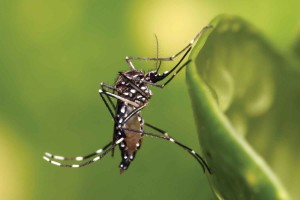
Chikungunya
Chikungunya is a febrile viral disease transmitted by mosquitoes. Most commonly, the mosquitoes involved are Aedes aegypti and Aedes albopictus, two species which can also transmit other mosquito-borne viruses, including dengue. It causes fever and severe joint pain. Other symptoms include muscle pain, headache, nausea, fatigue and rash. Chikungunya was first described during an outbreak in southern Tanzania in 1952. It is an RNA virus that belongs to the alphavirus genus of the family Togaviridae. The name “chikungunya” derives from a word in the Kimakonde language, meaning “to become contorted”, and describes the stooped appearance of sufferers with joint pain.
Chikungunya has been identified in over 60 countries in Asia, Africa, Europe and the Americas. Since 2011 Chikungunya has been identified in the Pacific Region. There is no specific antiviral drug treatment for chikungunya.
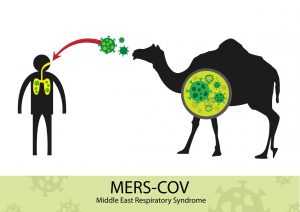 MERS
MERS
Middle East Respiratory Syndrome (MERS) is caused by a coronavirus (MERS-CoV). Coronaviruses are a large and diverse family of viruses which include viruses that are known to cause illness in humans (including the common cold and SARS) and animals. MERS is a respiratory condition, the main symptoms of which include fever, cough, muscle pain and breathlessness, and can also result in kidney failure and blood clots. Sometimes gastrointestinal symptoms may also be present. MERS is a virus that is transmitted from animals to humans. Camels are suspected to be the primary source of infection for humans.
Many airborne diseases affect humans. Understanding diseases that spread through the air, and how to prevent and avoid them, is important. There are several treatment options, as well, which people need to know if they catch an airborne disease. Simple measures, such as staying home when sick, reducing contact with people who are sick, and other prevention methods, are also looked at in this article.
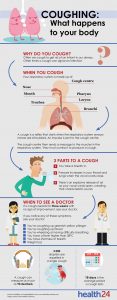 Fast facts on airborne diseases
Fast facts on airborne diseases
Here are some key points about airborne diseases. These illnesses, including colds and flu, are transmitted through the air.
Many airborne diseases are common and can have mild or severe symptoms.
Prevention tips include good ventilation to swap indoor and outdoor air.
Ventilation methods, such as opening a window or using fans, help to exchange dirty air.
Treatment for less serious airborne diseases includes rest and fluids.
Common airborne diseases
Particles that cause airborne diseases are small enough to cling to the air. They hang on dust particles, moisture droplets, or on the breath until they are picked up. They are also acquired by contact with bodily fluids, such as mucus or phlegm.
Once the pathogens are inside the body, they multiply until someone has the disease. Common airborne diseases include
Influenza: The seasonal “flu” virus spreads easily from person to person. There are many strains of the flu, and it continually changes to adapt to the human immune system.
The common cold: The condition called “a cold” is usually caused by a rhinovirus. There are many rhinoviruses, and the strains change to make it easier to infect humans.
Varicella zoster: This virus causes chickenpox and spreads easily among young children. The rash is typically widespread on the body and made up of small red spots that turn into itchy blisters, which scab over in time. Chickenpox is spread for about 48 hours before a rash shows, which is how it infects others so successfully. It is usually spread through the air or by touching the rash.
Mumps: This virus affects the glands just below the ears, causing swelling and, in some cases, loss of hearing. Vaccination is considered important to prevent the disease.
Measles: This illness is caused by contact with a person who has the measles virus, or by inhaling particles from their sneezes or cough. As with mumps, vaccination is essential for preventing the spread of this disease.
Whooping cough (pertussis): This is a contagious, bacterial illness that causes the airways to swell. The hacking cough that results is persistent and generally treated with antibiotics early on to prevent damage.
Uncommon airborne diseases include:
Anthrax: This is a bacterial disease that infects the body when a person inhales anthrax spores. It causes nausea and flu symptoms. Inhaled anthrax is difficult to diagnose because it resembles other diseases such as flu. Anthrax is treated with antibiotics to stop it worsening.
Diphtheria: A rare bacterial disease, diphtheria damages the respiratory system and attacks the heart, kidneys, and nerves. Its rarity may be due to widespread vaccination. Diphtheria can be treated with antibiotics.
Meningitis: Meningitis swells the membranes around the brain and spinal cord. It is a bacterial or viral infection, but is also caused by an injury or fungal infection. Common symptoms include a persistent headache, fever, and skin rash.
(The author is Member Indian Medical Association and Chairman, Pushpanjali Health Care, New Delhi)

